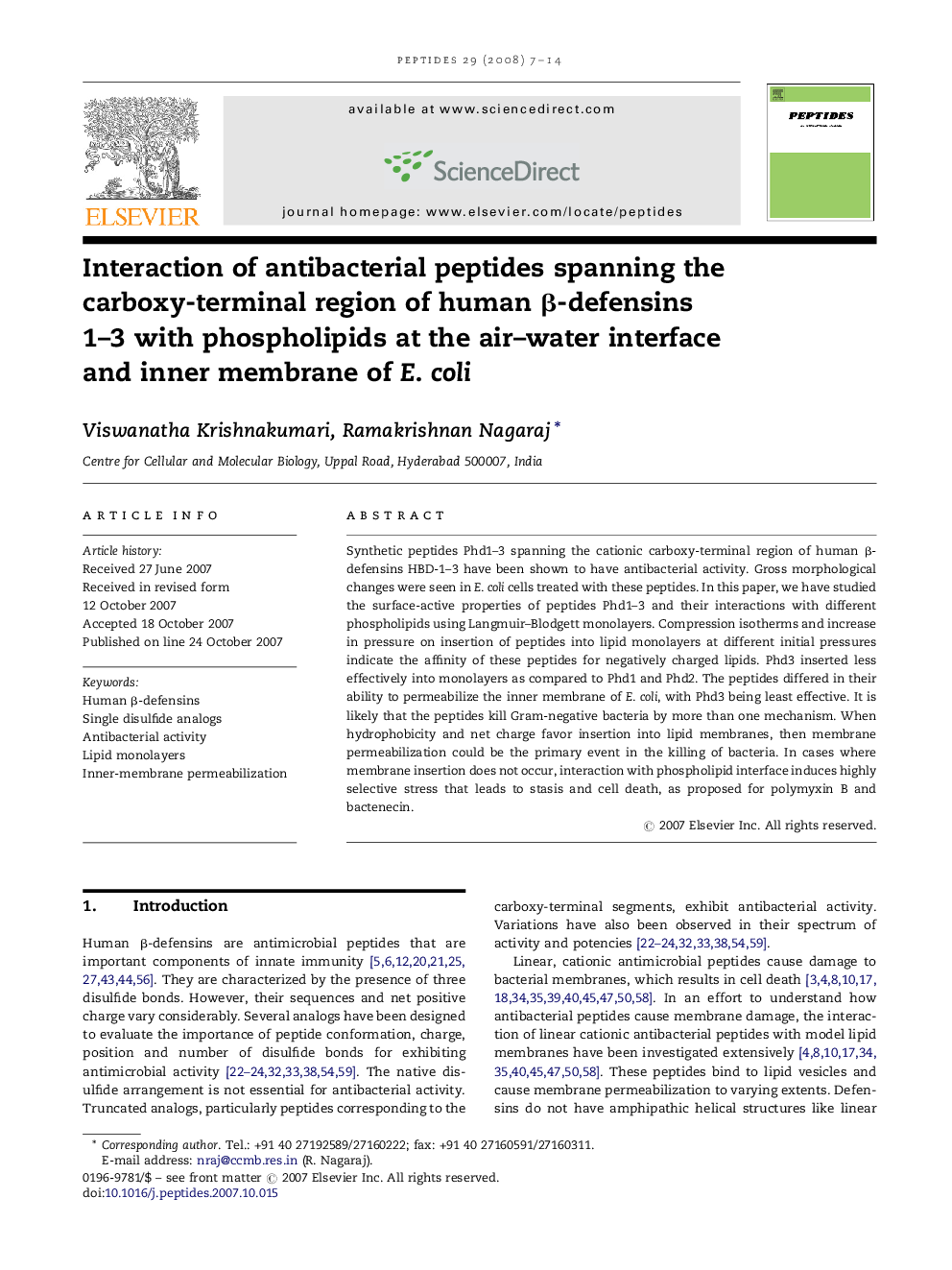| Article ID | Journal | Published Year | Pages | File Type |
|---|---|---|---|---|
| 2007674 | Peptides | 2008 | 8 Pages |
Abstract
Synthetic peptides Phd1-3 spanning the cationic carboxy-terminal region of human β-defensins HBD-1-3 have been shown to have antibacterial activity. Gross morphological changes were seen in E. coli cells treated with these peptides. In this paper, we have studied the surface-active properties of peptides Phd1-3 and their interactions with different phospholipids using Langmuir-Blodgett monolayers. Compression isotherms and increase in pressure on insertion of peptides into lipid monolayers at different initial pressures indicate the affinity of these peptides for negatively charged lipids. Phd3 inserted less effectively into monolayers as compared to Phd1 and Phd2. The peptides differed in their ability to permeabilize the inner membrane of E. coli, with Phd3 being least effective. It is likely that the peptides kill Gram-negative bacteria by more than one mechanism. When hydrophobicity and net charge favor insertion into lipid membranes, then membrane permeabilization could be the primary event in the killing of bacteria. In cases where membrane insertion does not occur, interaction with phospholipid interface induces highly selective stress that leads to stasis and cell death, as proposed for polymyxin B and bactenecin.
Related Topics
Life Sciences
Biochemistry, Genetics and Molecular Biology
Biochemistry
Authors
Viswanatha Krishnakumari, Ramakrishnan Nagaraj,
